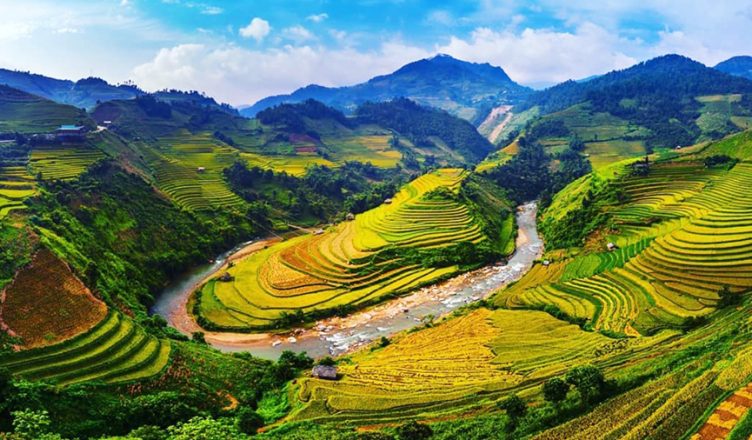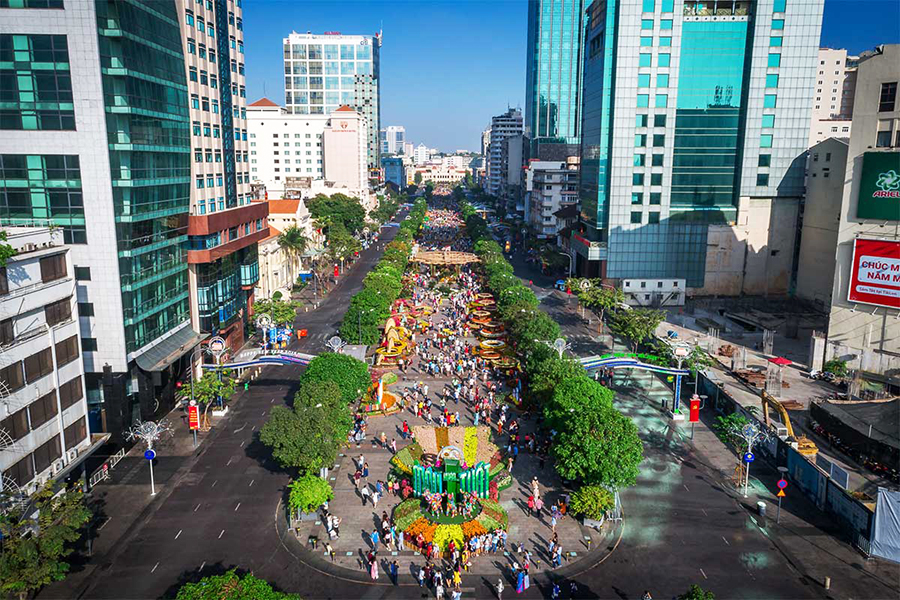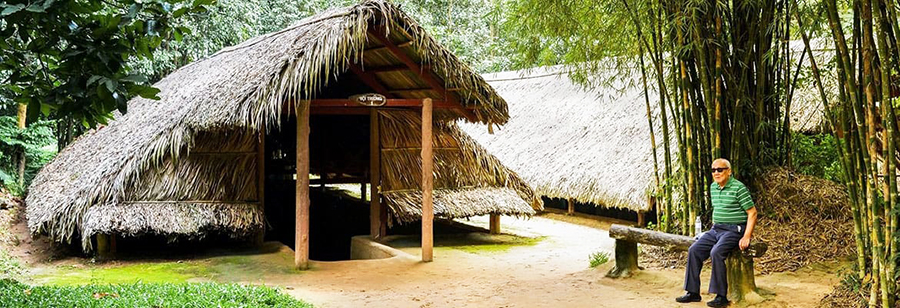Muong Hoa Valley, a breathtakingly stunning valley near Sapa Vietnam, is a not-to-be-missed destination for anyone who loves an awe-inspiring trip. It has the pristine beauty of golden rice terraces and bizarre rock formations, along with unique cultural traditions.
Overview of Muong Hoa Valley
Muong Hoa valley is one of the popular attractive destinations in Sapa, especially for tourists who are looking for adventure. Coming here, tourists will be fascinated by the charming beauty of this valley, which is also home to many ethnic minorities, many wonderful natural beauties. If you want to escape from the busy life and admire beautiful and peaceful scenery, Muong Hoa valley should be on your list of must-see places. Keep reading this article, and you will find useful information about this charming valley
Muong Hoa valley is located 4 km from Sapa Center and stretching about 15 km to Ban Ho Village. The valley is the place where Black Hmong Tribe, Day Tribe, Red Dao Tribe, and Tay Tribe people live on the 2 banks of Hoa Stream. There are five main villages in this Valley: Y Linh Ho Village, Lao Chai Village, Ta Van Village, Giang Ta Chai Village, and Ban Ho Village at the end of the Valley.

You might also like:
The highlights of Muong Hoa Valley
The mesmerizing rice terraces
Rice terraces are a signature of Muong Hoa Valley. The whole valley is adorned with endless rice terraces, creating a picturesque and dreamy sight. The rice terraces in this valley are considered some of the most beautiful in the world. They have even been recognized as a National Heritage by the Vietnamese government.
The terraced fields wind along the mountainside, changing their color from lush green in spring to golden yellow in autumn. Visitors can take a Muong Hoa Valley trekking tour to witness the traditional way of cultivation, and even participate in some farming activities like planting and harvesting.

The mysterious ancient field of rocks
With a total number of about 200 rock formations on an area of 8 square kilometers, the ancient field of rocks in Muong Hoa Valley offers a glimpse into Vietnam’s ancient past. It is a mysterious and fascinating site that has puzzled archaeologists and historians for over 100 years. The large, megalithic stones are arranged in circular formations. Some weigh up to several tons and are believed to have had religious or astronomical significance.

Muong Hoa Stream
Adding to the stunning beauty of Muong Hoa Valley is Muong Hoa Stream – a peaceful stream that flows through the valley for over 15 kilometers, creating a picturesque landscape of cascading waterfalls, crystal-clear ponds, and lush green forests.
The beauty of Muong Hoa Stream is further enhanced by a background of magnificent rice terraces and towering mountains. Visitors can explore the stream on foot or by bike, taking in the serene surroundings and immersing themselves in the tranquility of this natural wonder.
Sitting by the stream, listening to the sounds of the water, and enjoying the fresh atmosphere will help you leave all the hustle and bustle behind.

Unique cultural experiences

In addition to the stunning natural landscapes, Muong Hoa Valley is also known for its rich cultural heritage. It is home to a number of ethnic minorities, including the H’mong, Dao, and Giay people who have lived here for generations. You can learn about their traditions, customs, and beliefs through various cultural tours.
Some cultural experiences that you can try here are wearing the traditional clothes, having a traditional dance, enjoying the local food, etc. These exciting activities will help you understand more about the ethnic people in Vietnam and admire the cultural beauty of the Vietnamese people.
Map of Muong Hoa Valley
How to get to Muong Hoa Valley?
Muong Hoa Valley is located in Lao Cai Province, Vietnam. 8 kilometers away from the town center, it is one of the most attractive places to visit in Sapa.

To get to the valley, you should first reach the town of Sapa. From Hanoi, there are several means of transportation available to get to Sapa. The bus and train are the most popular, taking approximately 5-6 hours to travel, with prices varying between 300,000 and 600,000 VND. If you depart from other places in Vietnam, you can get to Hanoi by car, train, or plane.
Then, to get to Muong Hoa Valley Sapa, the easiest option is to hire a tour guide and follow their instructions. If you love exploring the stunning nature of the area by yourself, you can rent a motorbike or a car to reach Muong Hoa Valley on your own. You should use Google Maps and ask the locals so as not to be lost.
For travelers who want to visit the Muong Hoa Valley with private services, you can book a private tour from Vietnam Shore Excursions. Professional and knowledgeable tour guides will share profoundly many interesting stories about this place and Sapa, as well as the local life of local people during the tour. Here are some Sapa Tours which customers can find out and book for you and your group.

When is the best time to visit Muong Hoa Valley Sapa?
Tourists can visit the valley at any time of the year. However, the best time to visit this hidden “Heaven on Earth” is from March to May. During this time, the weather is pleasant with lush green rice terraces, and the valley comes alive with the cultural activities of the ethnic minorities.
Moreover, if you want to contemplate the brilliant yellow of the rice terraces stretching to the horizon, you should consider visiting this valley from September to November. During this time, the whole valley is immersed in the wonderful color and sweet fragrance of ripe rice.

What to eat in Muong Hoa Valley Vietnam?
After a day of exploring the wonderful valley, visitors can spend time enjoying the rich cuisine in Northwestern Vietnam. Some must-try dishes here are:
- Grilled fish – freshly caught from Muong Hoa Stream
- Thang Co – a traditional H’mong stew made with horse meat, organs, and bones
- Com Lam – sticky rice cooked inside bamboo tubes and served with grilled pork
- Buffalo meat – a unique dish of the region

Besides Muong Hoa Valley, there are many attractions in Sapa that tourists can add to their bucket list of wonderful places to visit in Sapa, such as Cat Cat Village, Lao Chai Village, Ta Van Village, Ta Phin Village, Fansipan Mountain, Love Waterfall, Thac Bac Waterfall, etc. You will get to discover all the hidden charm of one of the most poetic towns in the Northwestern region of Vietnam.
In conclusion, Muong Hoa Valley Sapa offers visitors a glimpse into the region’s cultural heritage and natural beauty, with the magnificent scenery of rice terraces and cascading waterfalls. This enchanting valley is truly a natural wonder that should not be missed out on if you are planning to visit Sapa.












